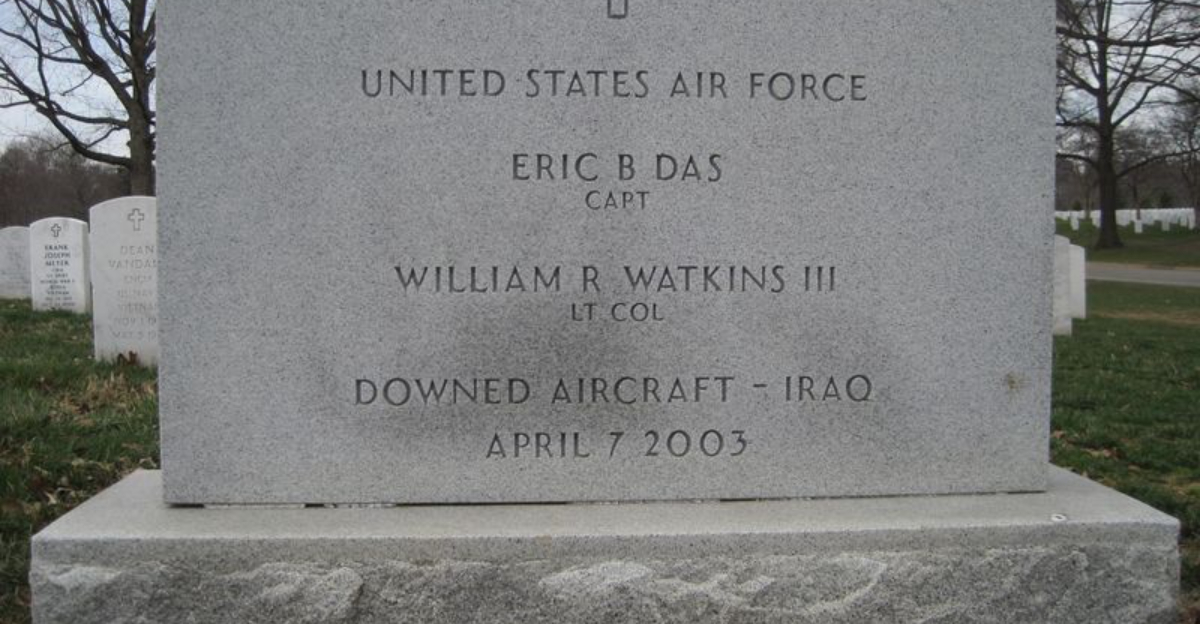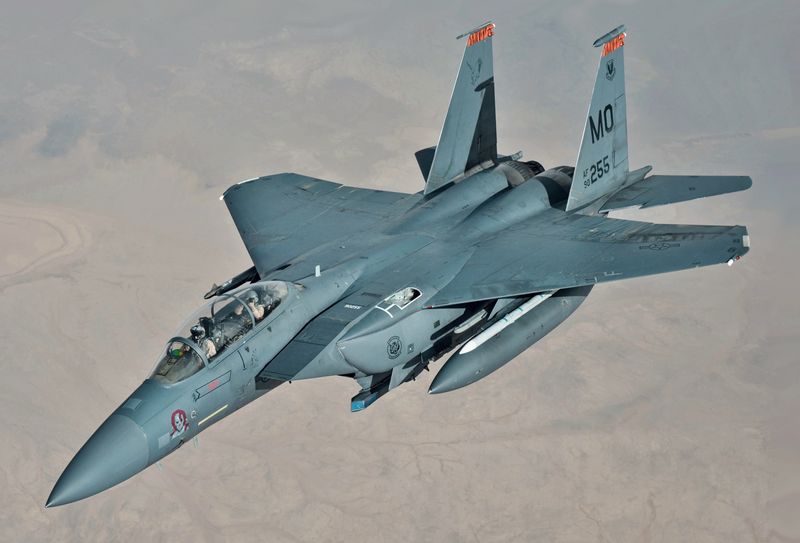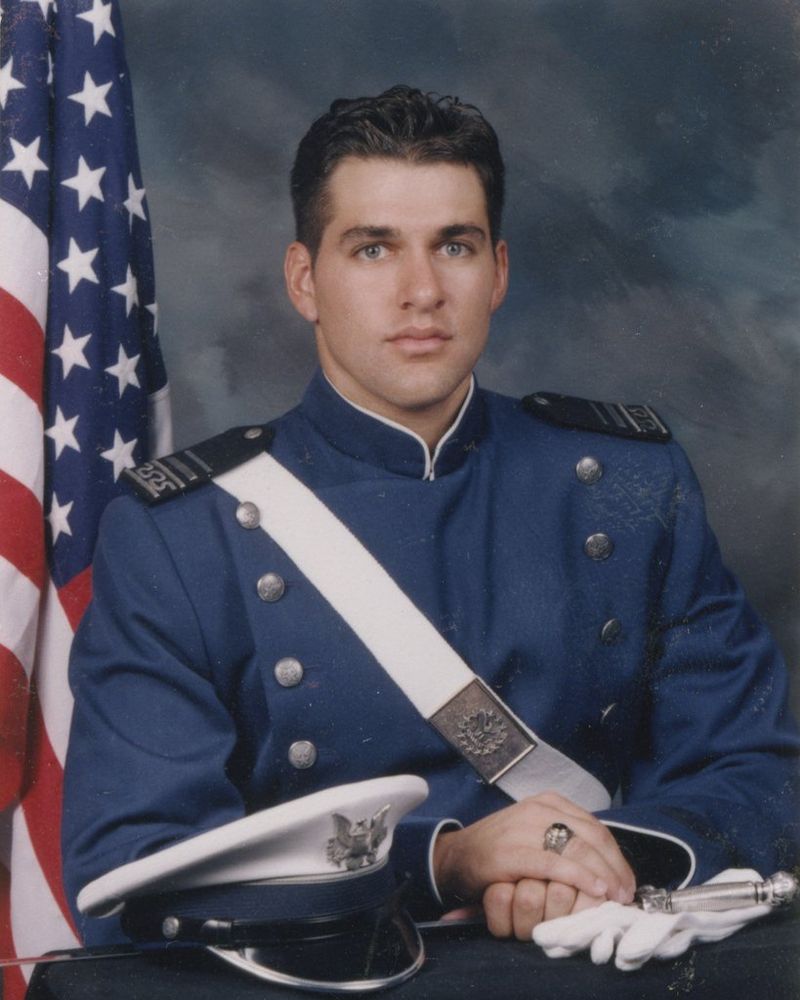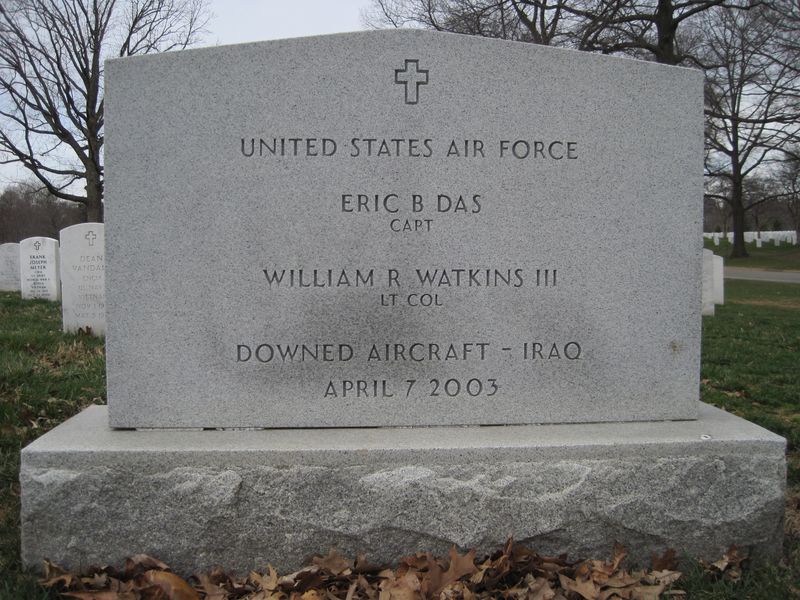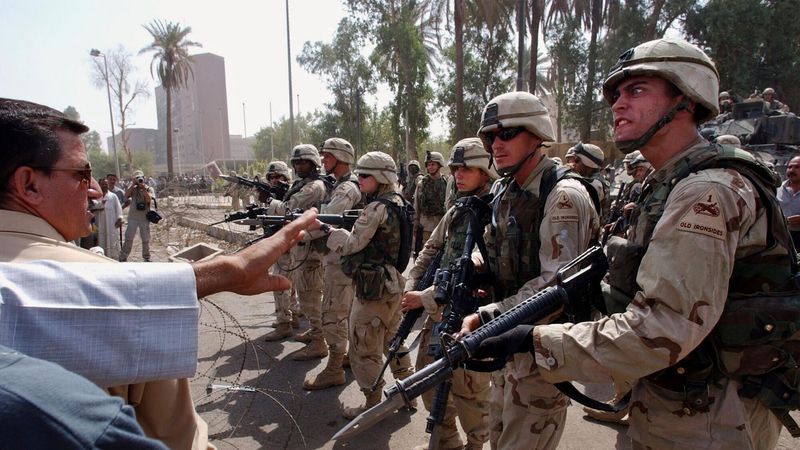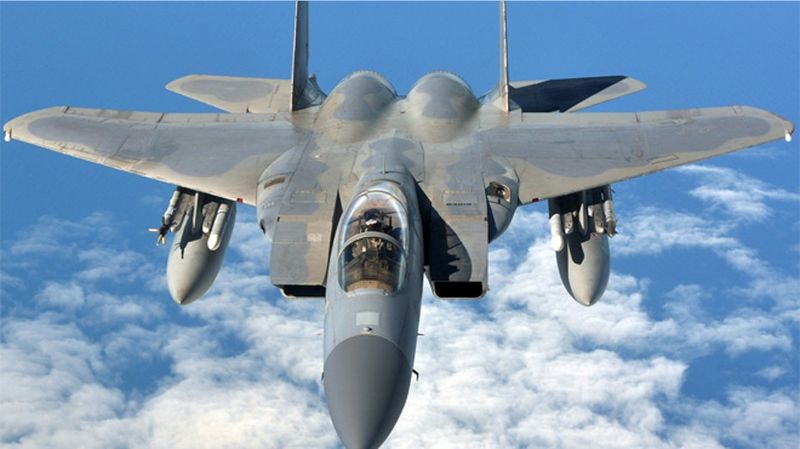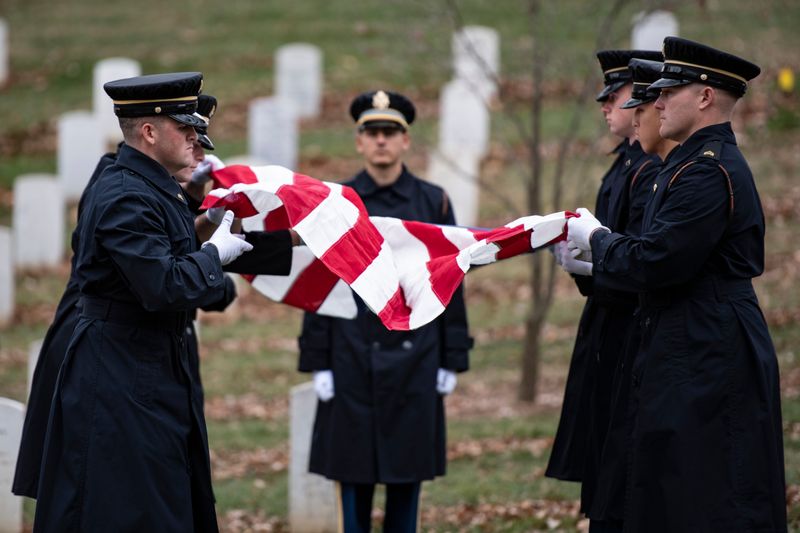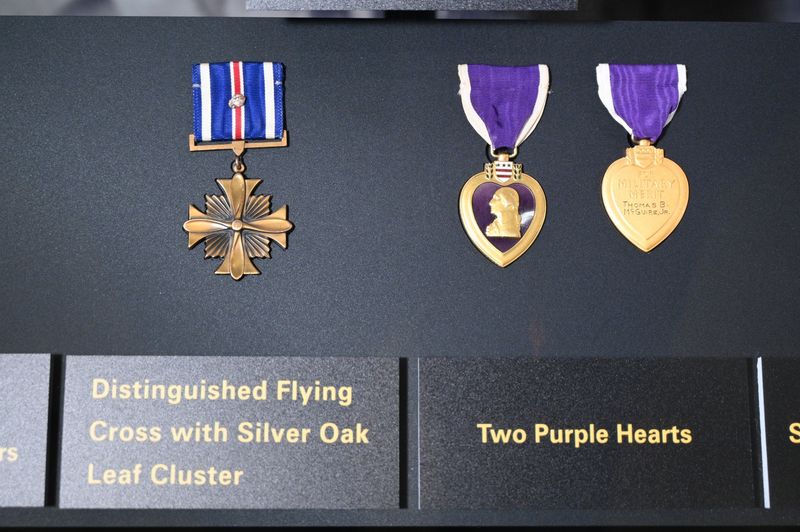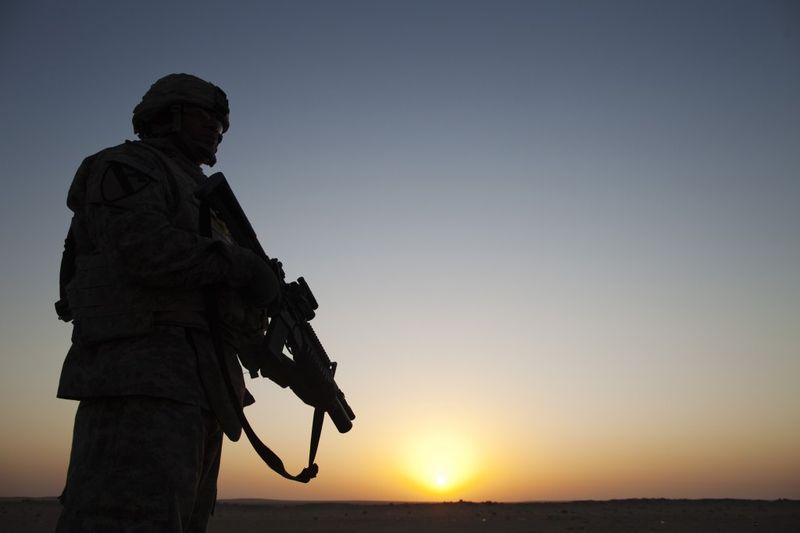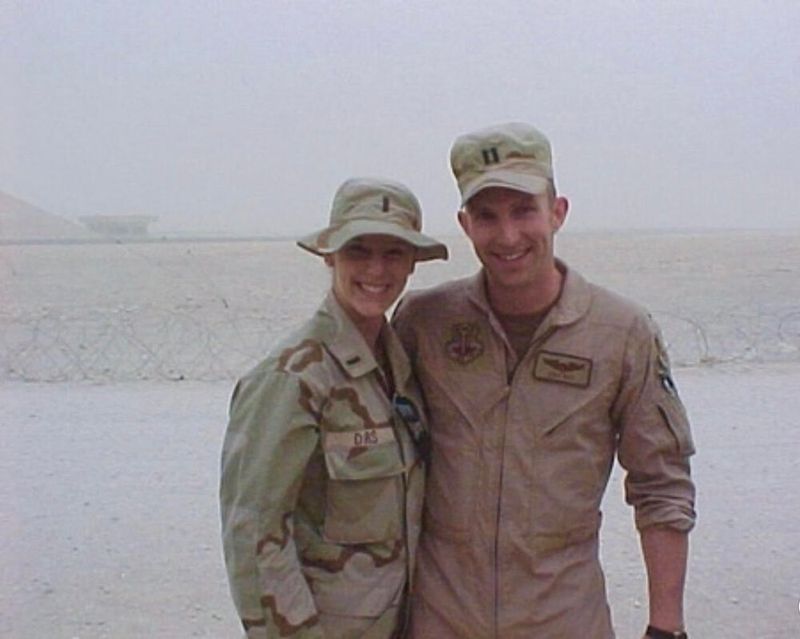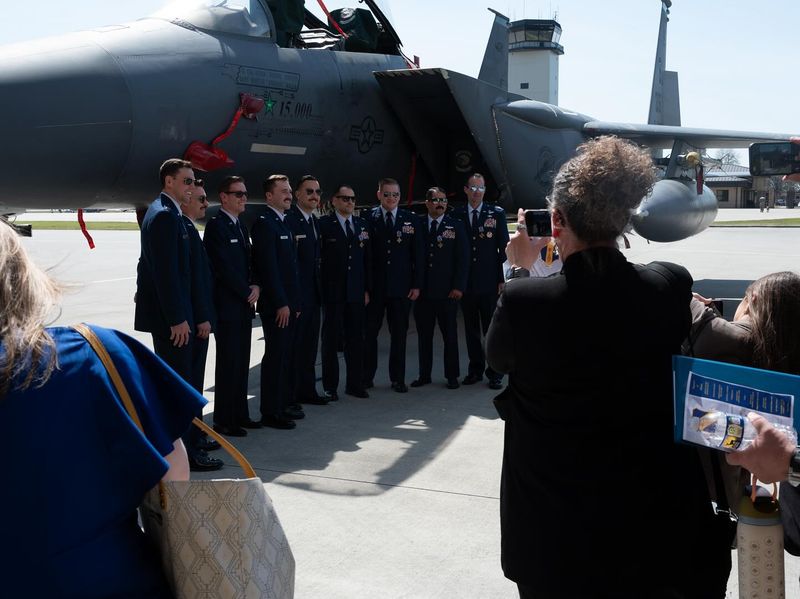During Operation Iraqi Freedom in April 2003, two brave airmen made the ultimate sacrifice while serving their country.
Captain Eric Das and Major William Watkins III were lost when their F-15E Strike Eagle crashed near Tikrit, Iraq.
Their courage, dedication, and service continue to inspire fellow service members and civilians alike to this day.
1. The Strike Eagle’s Final Mission
Captain Das and Major Watkins flew the F-15E Strike Eagle, a powerful dual-role fighter designed for both air combat and ground attack missions. Their aircraft could reach speeds of Mach 2.5 while carrying up to 23,000 pounds of weapons.
During their final mission on April 7, 2003, they provided crucial close air support for ground forces advancing toward Tikrit, one of Saddam Hussein’s last strongholds. The Strike Eagle’s advanced targeting systems made it ideal for precision strikes in hostile territory.
2. Captain Eric Das: The Skilled Pilot
At just 30 years old, Captain Eric Das from Amarillo, Texas embodied the Air Force’s highest standards. Friends described him as a natural aviator with exceptional skills in the cockpit and an infectious smile that lifted everyone’s spirits.
Before his final deployment, Das had expressed his dedication to serving his country despite the risks. His leadership qualities stood out among his peers at the 333rd Fighter Squadron based at Seymour Johnson Air Force Base in North Carolina.
3. Major William Watkins: The Experienced WSO
As the Weapons Systems Officer (WSO), Major William Watkins III brought 37 years of life experience and tactical expertise to every mission. The Danville, Virginia native was known for his meticulous attention to detail and calm demeanor under pressure.
Colleagues called him “Wild Bill” despite his methodical approach to mission planning. His role involved managing the aircraft’s complex weapons systems and ensuring precision targeting during combat operations.
4. The Dangerous Skies Over Tikrit
Tikrit, Saddam Hussein’s hometown, represented one of the most heavily defended areas in Iraq during April 2003. Anti-aircraft fire and surface-to-air missiles created a deadly environment for coalition aircraft.
Intelligence reports indicated concentrated enemy resistance in the region. Despite the Air Force’s air superiority, low-altitude missions still carried significant risk from shoulder-fired missiles and conventional anti-aircraft weapons that remained operational throughout the area.
5. The Tragic Loss
Radio contact with Das and Watkins was suddenly lost during their night mission over Tikrit. Search and rescue teams launched immediately, hoping against hope to find the crew alive.
The wreckage was eventually located in rugged terrain northwest of the city. While the exact cause remains classified, reports suggest their aircraft may have encountered either mechanical failure or enemy fire during a critical phase of their operation.
6. Brothers in Arms, Brothers in Rest
In a solemn ceremony that brought tears to the eyes of hardened military personnel, Das and Watkins were laid to rest side by side at Arlington National Cemetery on August 29, 2003. The burial with full military honors included a flyover by F-15E Strike Eagles from their squadron.
Their adjacent graves symbolize the unbreakable bond formed between pilot and WSO. The headstones stand as eternal reminders of their sacrifice and brotherhood.
7. Decorated for Valor
Following their deaths, both airmen received multiple posthumous awards recognizing their extraordinary service. The Distinguished Flying Cross honors heroism during aerial flight, while the Purple Heart acknowledges their wounds received in combat.
Additionally, they were awarded the Air Medal for meritorious achievement. Their medals tell a story of courage under fire and dedication to mission success regardless of personal risk. These decorations now serve as treasured keepsakes for their families.
8. Operation Iraqi Freedom Context
Das and Watkins flew during a pivotal moment in Operation Iraqi Freedom. By early April 2003, coalition forces had established air dominance, but ground resistance remained fierce in northern Iraq.
Their mission was part of a broader air campaign executing hundreds of daily sorties. Strike packages targeted command centers, military installations, and provided close air support for advancing ground troops. Their sacrifice came during the final push toward Baghdad as resistance intensified around Tikrit.
9. Personal Lives and Dreams Cut Short
Beyond their military identities, Das and Watkins had rich personal lives and dreams for the future. Das had recently married his wife Nikki, while Watkins left behind a wife and young daughter.
Das enjoyed outdoor adventures and had plans to become a test pilot after his deployment. Watkins, an avid history buff, collected military memorabilia and mentored younger officers. Their personal stories remind us that behind every uniform is a person with hopes, dreams, and loved ones.
10. Enduring Legacy
The legacy of Das and Watkins lives on through annual memorial ceremonies at Seymour Johnson AFB. Their names appear on the Wall of Honor at the National Museum of the United States Air Force in Dayton, Ohio.
Fellow aviators share their story during training, emphasizing the risks and responsibilities of combat flying. Scholarship funds established in their names help military children pursue higher education. Their courage continues inspiring new generations of military aviators who follow in their footsteps.
